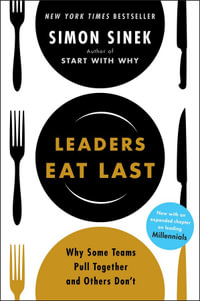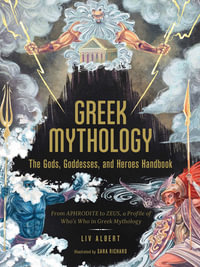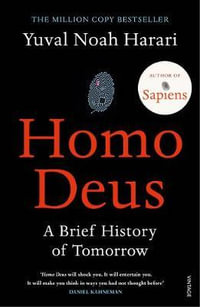Celebrity: Critical Concepts in Sociology Edited by Chris Rojek a VOLUME I: ORIGINS AND HISTORICAL COUNTERPOINTS a Contents a Acknowledgements a Introduction a Part 1: Ancient Roots and Controversies a 1. P. Brown, 'The Saint as Exemplar in Late Antiquity', Representations, 1983, 2, 1--28. a 2. P. Brandon, 'The Portrait of Christ: Its Origin and Evolution', History Today, 1971, 21, 473--81. a Part 2: Modernity and Celebrity a 3. H. Parker, 'The Formation of Napoleon's Personality', French Historical Studies, 1971--2, 7, 6--26. a 4. T. Mole, 'Lord Byron and the End of Fame', International Journal of Cultural Studies, 2008, 11, 3, 343--61. a 5. L. Langbauer, 'The Celebrity Economy of Victorian Studies', Victorian Studies, 1993, 36, 4, 466--72. a 6. L. Berlanstein, 'Historicizing and Gendering Celebrity Culture; Famous Women in 19th-Century France', Journal of Women's History, 2004, 16, 4, 65--91. a 7. E. Barry, 'From Epitaph to Obituary: Death and Celebrity in 18th-Century British Culture', International Review of Cultural Studies, 2008, 11, 3, 259--75. a 8. L. Butterfield, 'B. Franklin's Epitaph', New Colophon, 1950, 3, 9--39. a 9. T. McPherson, 'Picturing Tragedy: Mrs Siddons as the Tragic Muse Revisited', Eighteenth-Century Studies, 1973--4, 33, 3, 401--30. a 10. N. Dames, 'Brushes with Fame: Thackeray and the Work of Celebrity', Nineteenth-Century Literature, 2001, 56, 1, 23--51. a 11. R. Salmon, 'Signs of Intimacy: The Literary Celebrity in the "Age of Interviewing"', Victorian Literature and Culture, 1977, 25, 1, 159--77. a 12. Q. Anderson, 'John Dewey's American Democrat', Daedulus, 1979, 108, 5, 145--59. 13. J. Richards, 'Spreading the Gospel of Self Help: G. A. Henty, and Samuel Smiles', Journal of Popular Culture, 1982, 16, 2, 52--65. a 14. R. Allen, 'B. F. Keith and the Origins of American Vaudeville', Theatre Survey, 1980, 21, 105--15. a 15. J. Gottlieb, 'The Marketing of Megalomania: Celebrity, Consumption and the Development of Political Technology in the British Union of Fascists', Journal of Contemporary History, 2006, 41, 1, 35--55. a 16. M. Featherstone, 'The Heroic Life and Everyday Life', Theory, Culture & Society, 1992, 9, 159--82. a 17. T. McFarland, 'The Originality Paradox', New Literary History, 5, 3, 1973--4, 447--76. a 18. V. Chakraborty, 'Leadership in East and West: A Few Examples', Journal of Human Values, 2003, 9, 1, 29--52. a VOLUME II: BASIC CONCEPTS AND KEY DEBATES a Contents a Acknowledgements a Part 3: Basic Concepts a 19. S. Turner, 'Charisma Re-Considered', Journal of Classical Sociology, 2003, 3, 5--26. a 20. S. Kracauer, 'The Mass Ornament', New German Critique, 1975, 2, 5, 67--76. a 21. D. Horton and R. Wohl, 'Mass Communications and Para-Social Interaction: Observations on Intimacy at a Distance', Journal of Psychiatry, 1956, 19, 3, 215--29. a 22. S. Asch, 'Opinions and Social Pressures', Scientific American, 1955, 193, 31--5. a 23. S. Lukes, 'Political Ritual and Social Integration', Sociology, 1975, 9, 289--308. a 24. A. Garry, 'Narcissism and Vanity', Social Theory and Practice, 1982, 8, 2, 145--53. a 25. A. Tolson, 'Being Yourself: The Pursuit of Authentic Celebrity', Discourse Studies, 2001, 3, 443--57. 26. E. Sternberg, 'Phantasmagoric Labor: The New Economics of Self Presentation', Futures, 1998, 30, 1, 3--21. a Part 4: Key Debates a 27. J. Rose, 'The Cult of Celebrity', New Formations, 1999, 26, 9--20. a 28. T. Gitlin, 'The Culture of Celebrity', Dissent, Summer 1998, 81--3. a 29. J. Gamson, 'The Assembly Line of Greatness', Critical Studies in Mass Communication, 1992, 9, 1--24. a 30. F. Bonner et al., 'Celebrity and the Media', Australian Journal of Communication, 1999, 27, 1, 55--70. a 31. R. Penfold, 'The Star's Image, Victimization and Celebrity Culture', Punishment & Society, 2004, 6, 3, 289--302. a 32. Y. Engle and T. Kasser, 'Why Do Adolescent Girls Idolize Male Celebrities?', Journal of Adolescent Research, 2005, 20, 2, 263--83. a 33. B. P. Fraser et al., 'Media Celebrities and Social Influence: Identification with Elvis Presley', Mass Communications and Society, 2002, 1, 2, 183--206. a 34. P. Cushman, 'Why the Self is Empty: Toward a Historically Situated Psychology', American Psychologist, 1995, 45, 5, 599--611. a 35. L. McCutcheon et al., 'Conceptualization and Measurement of Celebrity Worship', British Journal of Psychology, 2003, 93, 67--87. a 36. B. King, 'Stardom, Celebrity and the Para-Confession', Social Semiotics, 2008, 18, 2, 115--32. a 37. B. Creed, 'The Cyberstar: Digital Pleaseures and the End of the Unconscious', Screen, 2000, 41, 1, 79--86. a 38. J. Baudrillard, 'The Masses: the Implosion of the Social in the Media', New Literary History, 1985, 16, 3, 577--89. a 39. D. Kellner, 'TV, Ideology and Emancipatory Popular Culture', Socialist Review, 1979, 45, 13--53. a 40. E. Levy, 'The Democratic Elite: America's Movie Stars', Qualitative Sociology, 1989, 12, 1, 29--54. a 41. B. G. Rader, 'Compensatory Sports Heroes: Ruth, Grange and Dempsey', Journal of Popular Culture, 1983, 16, 4, 11--22. a 42. P. Adler and P. Adler, 'The Gloried Self', Social Psychology Quarterly, 1989, 52, 4, 299--310. a VOLUME III: THE INTERDISCIPLINARY MATRIX a Contents a Acknowledgements a Part 5: History a 43. P. Roberts, 'The Kingdom's Two Bodies: Corporeal Rhetoric and Royal Authority During the Religious Wars', French History, 2007, 21, 2, 147--64. a 44. J. T. Campbell, 'Print the Legend: John Wayne and Postwar American Culture', Reviews in American History, 2000, 28, 3, 465--77. a a Part 6: Anthropology a 45. C. Yano, 'Charisma's Realm: Fandom in Japan', Ethnology, 1997, 36, 4, 335--49. a 46. I. M. Lewis, 'Spirit Possession and Deprivation Cults', Man, 1966, 1, 307--29. a Part 7: Sociology a 47. E. Shils, 'Charisma, Order and Status', American Sociological Review, 1965, 30, 199--213. a 48. G. McCann, 'Biographical Boundaries: Sociology and Marilyn Monroe', Theory, Culture & Society, 1985, 4, 4, 619--32. a Part 8: Psychology a 49. J. Maltby et al., 'Extreme Celebrity Worship, Fantasy Proneness and Disassociation: Developing the Measurement and Understanding of Celebrity Worship within a Clinical Personality Context', Personality and Individual Differences, 2006, 40, 273--83. a 50. J. Maltby et al., 'The Shalt Worship No Other Gods -- Unless they are Celebrities: The Relationship between Celebrity Worship and Religious Orientation ', Personality and Individual Differences, 2002, 32, 1157--72. a Part 9: Political Science a 51. J. Street, 'Celebrity Politicians: Popular Culture and Political Representation', British Journal of Politics and International Relations, 2004, 6, 4, 435--52. a 52. G. Meyer, 'Frank Sinatra: The Popular Front and an American Icon', Science & Society, 2002, 66, 3, 311--35. a Part 10: Cultural Studies a 53. J. McGuigan, 'British Identity and "the People's Princess", Sociological Review, 2000, 48, 1, 1--18. a 54. G. Turner, 'The Mass Production of Celebrity: "Celetoids, Reality TV and the "Demotic Turn"', International Journal of Cultural Studies, 2006, 9, 2, 153--65. a Part 11: Economics a 55. S. Rosen, 'The Economics of Superstars', American Economic Review, 1981, 68, 845--58. a 56. J. Agrawal and W. A. Kamakura, 'The Economic Worth of Celebrity Endorsers: An Event Study Analysis', Journal of Marketing, 1995, 59, 356--62. a Part 12: Media and Communication Studies a 57. S. Boon and C. Lomore, 'Admirer-Celebrity Relationships Among Young Adults: Explaining Perceptions of Celebrity Influence on Identity ', Human Communications Research, 2001, 27, 3, 432--65. a Part 13: Film Studies a 58. M. Basil, 'Identification as a Mediator in Celebrity Effects', Journal of Broadcasting and Electronic Media, 1967, 4, 4, 478--96. a 59. R. Dyer, 'Don't Look Now', Screen, 1982, 23, 3--4, 61--73. a Part 14: Legal Studies a 60. R. H. Coase, 'Payola in Radio and Television Broadcasting', Journal of Law and Economics, 1979, 22, 269--328. a 61. M. Jacoby and D. Zimmerman, 'Foreclosing on Fame: Exploring the Unchartered Boundaries of the Right of Publicity', NYU Law Review, 2002, 77, 1322--68. a a a VOLUME IV: GENRES AND COUNTER-GENRES a Contents a Acknowledgements a Part 15: Sport a 62. E. Cashmore, 'Tiger Woods and the New Racial Order', Current Sociology, 2007, 16, 4, 11--22. a 63. D. Andrews et al., 'Jordanscapes: A Preliminary Analysis of A Global Popular', Sociology of Sport Journal, 1996, 13, 428--57. a Part 16: Film a 64. B. Austin, 'Portrait of a Cult Film Audience: The Rocky Horror Picture Show', Journal of Communications, 1981, 31, 43--54. a Part 17: Television a 65. R. Silverstone, 'Television, Ontological Security and the Transitional Object', Media, Culture & Society, 1993, 15, 573-598. a 66. J. Fiske, 'Television: Polysemy and Popularity', Critical Studies in Mass Communications, 1986, 3, 391--408. a Part 18: Popular Music a 67. J. Stratton, 'What Is Popular Music?', Sociological Review, 1983, 31, 2, 293--309. a 68. D. Hesmondhalgh, 'Flexibility, Post-Fordism and the Music Industries', Media, Culture & Society, 1996, 18, 3, 469--88. a Part 19: Audiences a 69. M. G. Real, 'Super Bowl: Mythic Spectacle', Journal of Communications, 1975, 25, 1, 31--43. a 70. M. Hills, 'Off Guard, Unkempt, Unready? Deconstructing Contemporary Celebrity in heat Magazine', Continuum: Journal of Media and Cultural Studies, 2005, 19, 1, 21--38. a Part 20: Counter Genres a 71. C. Jenks and J. Lorentzen, 'The Kray Fascination', Theory, Culture & Society, 1997, 14, 3, 87--107. a 72. J. Frow, 'Is Elvis God?Cult, Culture, Questions of Method', International Journal of Cultural Studies, 1998, 1, 2, 197--210. a 73. P. Dietz et al., 'Threatening and Otherwise: Inappropriate Letters to Hollywood Celebrities', Journal of Forensic Sciences, 1991, 36, 1, 185--209. a 74. M. Wykes, 'Constructing Crime: Culture, Stalking, Celebrity and Cyber', Crime, Media and Culture, 2007, 3, 2, 158--74. a 75. L. Schlesinger, 'Celebrity Stalking, Homicide and Suicide', International Journal of Offender Therapy and Comparative Criminology, 2006, 50, 1, 39--46. a 76. N. Couldry and T. Markham, 'Celebrity Culture and Public Connection', International Journal of Cultural Studies, 2007, 10, 4, 403--21. 77. A. M. Rubin et al., 'Loneliness, Para-Social Interaction and Local Television News Viewing', Human Communication Research, 1985, 2, 36--53. a 78. E. Bronfen, 'Fault Lines: Catastrophe and Celebrity Culture', European Studies, 2001, 16, 117--39. a 79. S. Stack, 'Celebrities and Suicide: A Taxonomy and Analysis', American Sociological Review, 1987, 40, 401--12. a 80. M. Jamison, 'Mood Disorders and Patterns of Creativity in British Writers and Artists', Psychiatry, 1989, 52, 125--34. Index
























